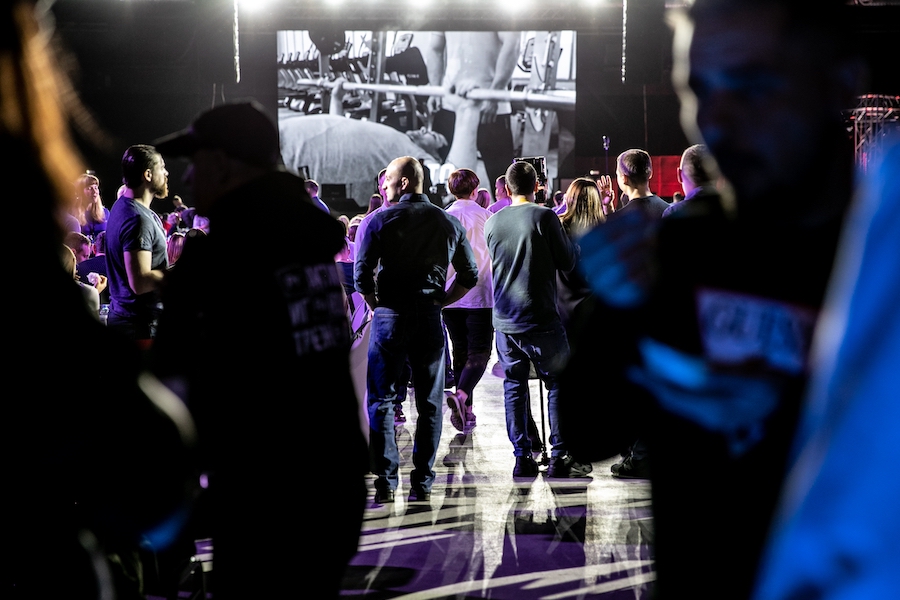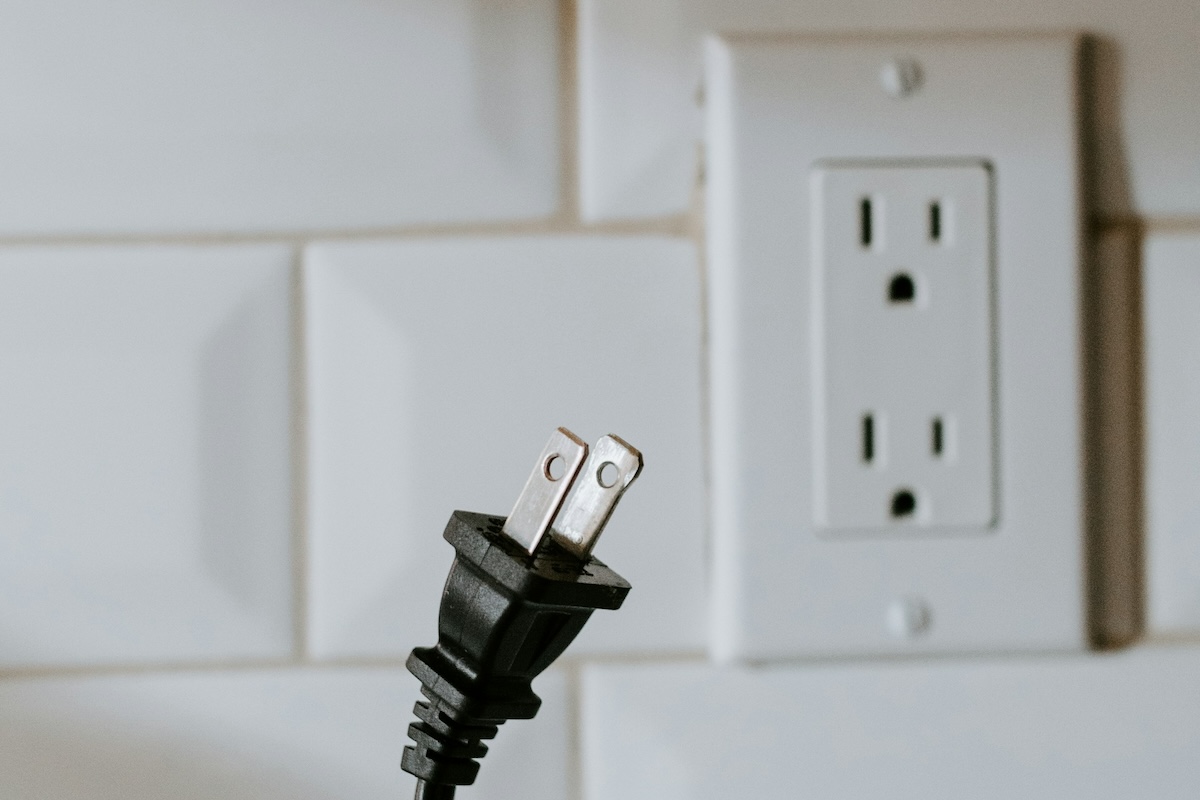Skift Take
The old tunnel-vision focus on the traditional sales funnel is now too narrow. It’s time to reframe the exhibition experience as a force that can push the marketing flywheel faster. Find out how the right show floor strategy can help companies connect with new customers, nurture existing ones, and accelerate growth.
This content was created collaboratively by Stova and Skift’s branded content studio, SkiftX.
In-person events have long been an essential component of a marketing team’s toolbox, but they are now truly indispensable. A recent study from Freeman reveals that 77 percent of buyers trust brands more after interacting face-to-face at live events. Take into consideration Hubspot research showing that 55 percent of consumers trust brands less than they used to — with a whopping 71 percent saying they don’t trust social media ads — and it’s clear that live events are a lifeline for driving conversions and nurturing business relationships.
At the same time, Gartner’s 2019 research into B2B purchasing decisions showed that buyers spend more time researching the company than meeting with its sales people. While that face-to-face encounter on the show floor is vital, it’s not the only piece of the puzzle. To supercharge lead conversions at your next exhibition, you need to help the companies on the show floor take advantage of opportunities to integrate those precious face-to-face encounters within a larger marketing strategy.
Ultimately, you want your event not only to drive leads down the marketing funnel, but to create a flywheel effect — one that removes the negative friction that stands in the way of connecting with customers while harnessing the positive forces that can fuel bigger success. Here are five key considerations to make that flywheel spin faster.
1. Use ROI Measurements That Reflect Exhibitor Goals & KPIs
Companies spend a lot of money to be part of your trade show — travel expenses, registration fees, third-party set-up and tear-down, meals and much more. Concerningly, research from Freeman shows that exhibitors are increasingly disappointed with their experience. The gap is growing between how highly they value their top exhibition priorities — such as meeting new customers or building brand awareness — and how satisfied they are with their results. In 2019, the gap was 30 percent, and it’s now 44 percent. To ensure that your event lives up to expectations, it’s critical to think carefully about how exhibitors define their ROI.
For example, the startup with the 10’ x 10’ booth may simply be looking to establish a solid brand footprint. On the other hand, the veteran company with the 30’ x 30’ space might be looking to reestablish itself as an innovator. While some might be focused on connecting with first-time customers, others might want to nurture existing relationships as well. The more data you can provide as an exhibition organizer, the better equipped both groups will be to push their marketing efforts to the next level.
Solutions That Prove ROI
Firstly, it’s important to be aware that some buyers may now be sending a smaller number of attendees to exhibitions, but those who do end up going tend to have strong decision-making power. In this era of quality over quantity, it’s critical to think beyond an ROI that is based solely on attendance numbers. Instead, work with an event tech partner that offers the capabilities to get a holistic picture of activity — from physical foot traffic and dwell times to digital signals including engagement with content in the mobile app, sponsored session feedback, and lead scoring based on the attendee’s level of overall engagement.
2. Make Connections Easy, Convenient & Fun
On the surface, an event that touts the chance “to join 10,000 other attendees” offers a powerful incentive to come: Everyone’s going to be there. However, that reason for registering can easily create a reason to feel frustrated, too. Those massive crowds can make finding new prospective business partners feel impossible. That’s a big force of friction in the flywheel, too: If an attendee feels lost, they’re less inclined to bother spending more time on the show floor.
It’s up to event organizers to simplify the overwhelming process of finding the right participants that will make the investment of time and money in the show worthwhile.
Solutions That Drive Buyer-Seller Connections
Look for technology that combines smart matchmaking with efficient ways to exchange contact information and book meetings.
Stova’s AI-powered matchmaking tools, for example, are designed to recommend curated relevant content and like-minded people to attendees based on their interests.
Additionally, the platform’s QR- and NFC-enabled badges make it easy to share contact information with a scan or a tap, respectively. It’s right in line with today’s contactless payment systems that save time and deliver what everyone wants: convenience. Similarly, registrants can message fellow attendees in the app to book meetings, or add their name as an opt-in lead on the exhibitor’s company page. For remote participants, Stova helps turn interest into immediate interaction. Instead of waiting for a post-event follow-up, attendees and exhibitors can take advantage of online conferencing in the app. There’s no need for sending a Zoom invitation next week; have the conversation right here and right now.
To add an extra element of fun, consider gamifying the experience by assigning points to each of these interactions through your mobile app.


3. Create Channels for Sharing Informational Content
While the ultimate goal of a trade show presence is securing valuable face-to-face time with potential buyers, the content those buyers can read, watch, and listen to is arguably even more essential. Gartner’s research shows that customers who received helpful information from suppliers were 2.8 times more likely to report high degrees of purchase ease. Translation: Every company’s marketing department should be focusing on developing resources for buyers to review on their own — white papers, videos, podcast episodes, slide decks and how-to tutorials.
Solutions for Building Buyer Confidence
For event organizers, it’s essential to select a tech partner with a simple exhibitor management tool and a mobile app where all that content can live, along with opportunities to help exhibitors pay to elevate that content. Rather than simply uploading all those resources in the hopes that buyers will find them, give companies the ability to purchase push notifications that drive traffic. They’ll apply some extra force to that flywheel with a paid advertisement — a 15-second introduction video with an invitation to a new product debut in the booth at 4:00 p.m. (just in time for happy hour), for example — that puts their best resource in front of more eyeballs.
As you look at your next exhibition, it’s important to recognize that the show floor is quickly becoming the place where marketers can begin building a relationship where they actually know their prospective customers. Privacy changes from Apple and Google will make the use of tracking links and the identification of users very difficult — if not altogether impossible — in the future. Add to that the decline of tracking cookies and the long-tail impact on targeted digital ads, and you have a major source of friction in the flywheel. Fortunately, an on-site presence holds the potential to turn something as simple as watching a video or seeing an ad into a chance to build a relationship.
4. Make Onsite Engagement the Number-One Priority
Getting participants into a booth starts with getting them to spend more time on the floor. As you work to create an environment that will wow everyone who walks through the door, it’s essential to think about it as less of a trade show (shows, after all, are passively watched) and more of a trade experience — one that inspires people to be part of something instead of standing on the sidelines.
Solutions for a Better Experience
With that in mind, gamification should be one of the first ingredients on your show’s nutritional label. There are obvious ways to encourage more traffic on the show floor with a booth-based scavenger hunt and a leaderboard that encourages some friendly competition. To amplify the effect, consider partnering with sponsors and exhibitors to offer prizes. And Stova’s ‘2 Truths & 1 Lie’ offers a fun way to break the digital ice among everyone in the audience.


5. Help Marketing and Sales Follow Through With Every Lead
When the booth is packed up and the show is over, the hard work officially begins: It’s time to turn the initial investment into a long-term impact by nurturing every potential lead. This is where it’s absolutely critical to have data integration with one tech partner that can connect all the dots across the entire experience. How did each lead engage with the company at the show? Did they scan the QR code while in the booth on Wednesday morning, or did they attend the sponsored session on Thursday afternoon? Did they set up a one-to-one video call but miss the appointment? Context is key to help create the right follow-up message.
“Leads that are captured from different areas — sponsored session attendance, scanned at the booth, a mobile app opt-in — must be distinguished from each other,” Phil Graham, enterprise sales director for Stova, says.
That lead may take a long time to turn into a new client, too, but exhibition organizers must be able to help companies trace that line back to their initial investment in the booth.
Solutions for Nurturing Leads
By offering that event data in a format that’s easy to integrate with the company’s CRM and marketing automation system, you can help craft a full narrative about the buyer’s journey. For corporate events, an end-to-end enterprise provider like Stova can even provide full integrations, ensuring that all data flows automatically across the entire tech stack.
In the end, that data helps prove the significant role that a booth or marketing event played in moving leads from point A (product discovery) to point Z (product purchase). Most importantly, that eventual purchase represents more than a new customer — it’s a new force in the flywheel, one that can act as an ambassador for the company in the future. And it all started on the show floor.
To learn more about tech solutions that can boost marketing and drive the sales pipeline at your exhibitions and business events, book a demo with Stova today.
This content was created collaboratively by Stova and Skift’s branded content studio, SkiftX.






